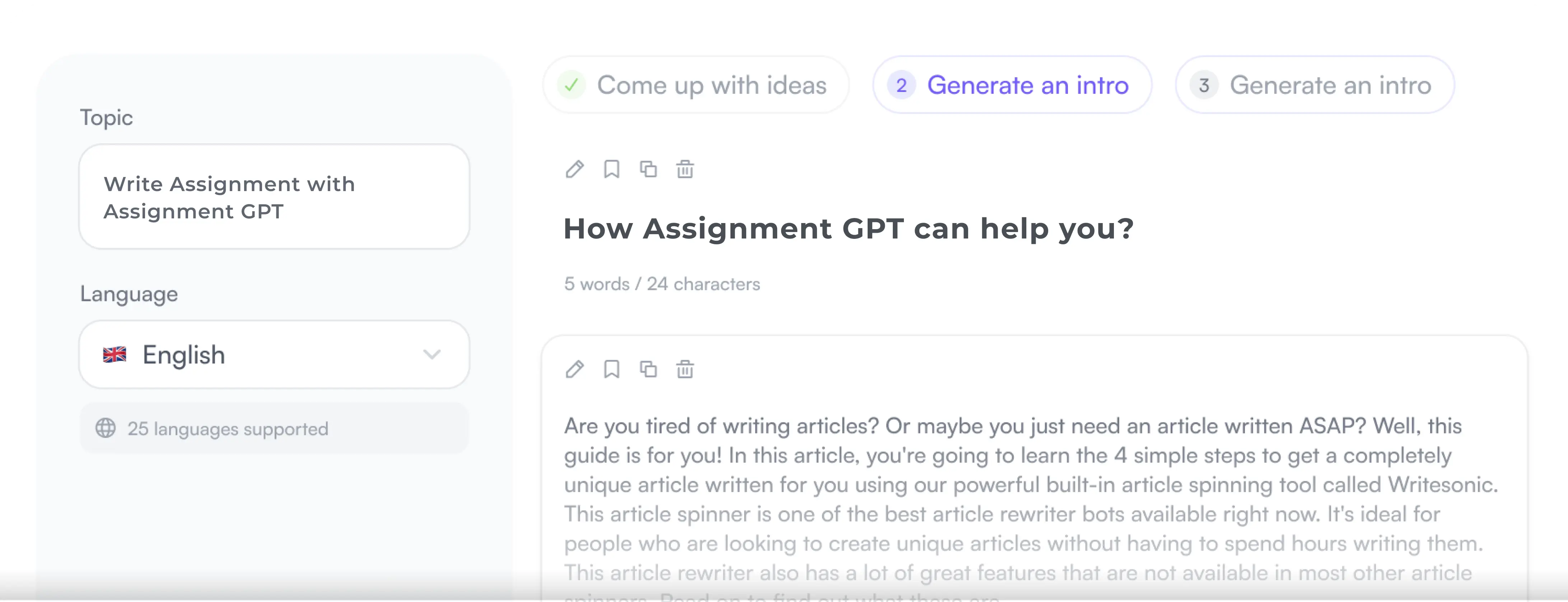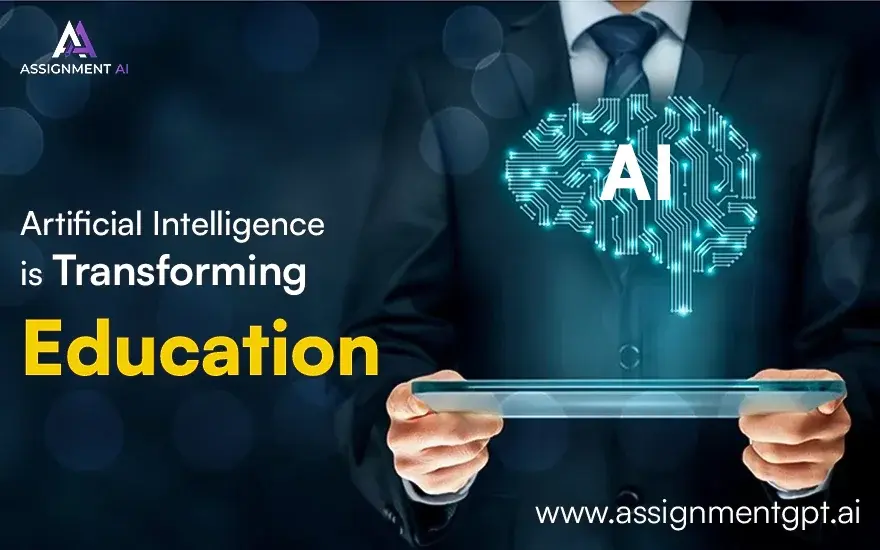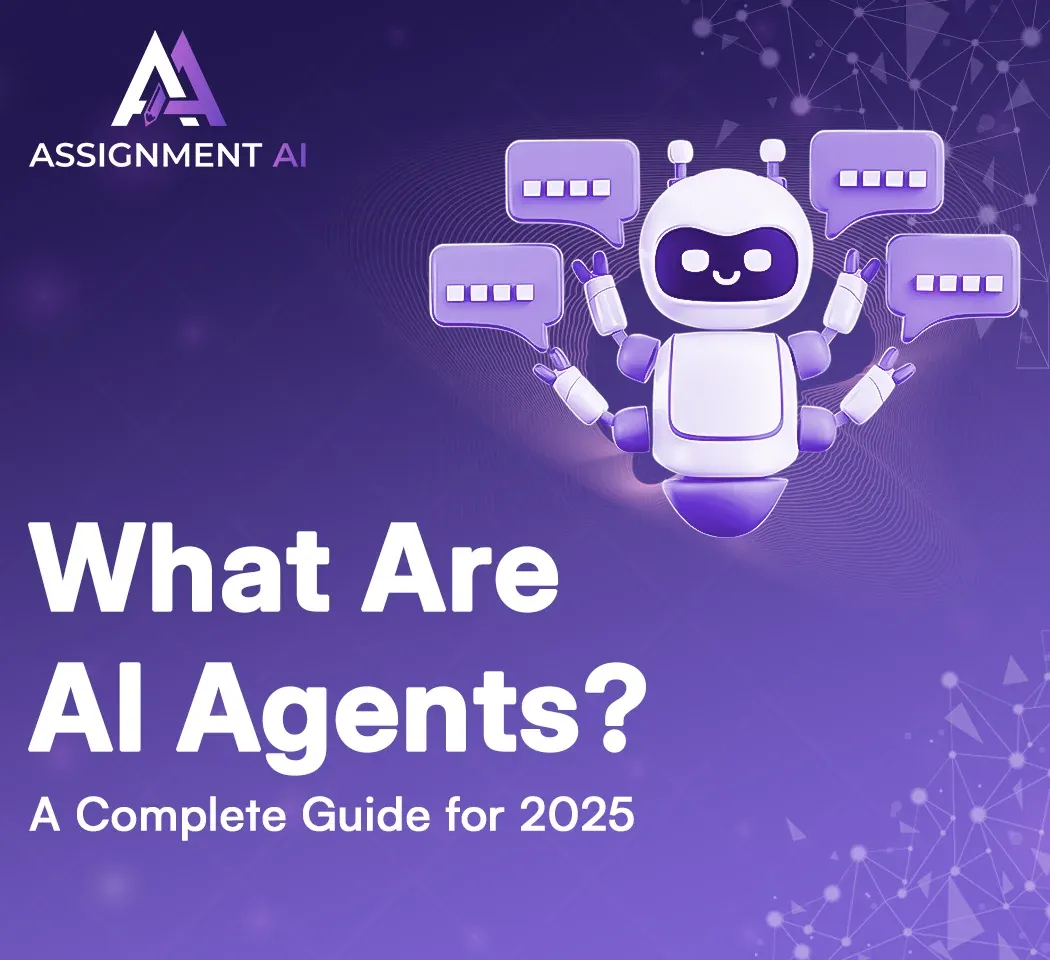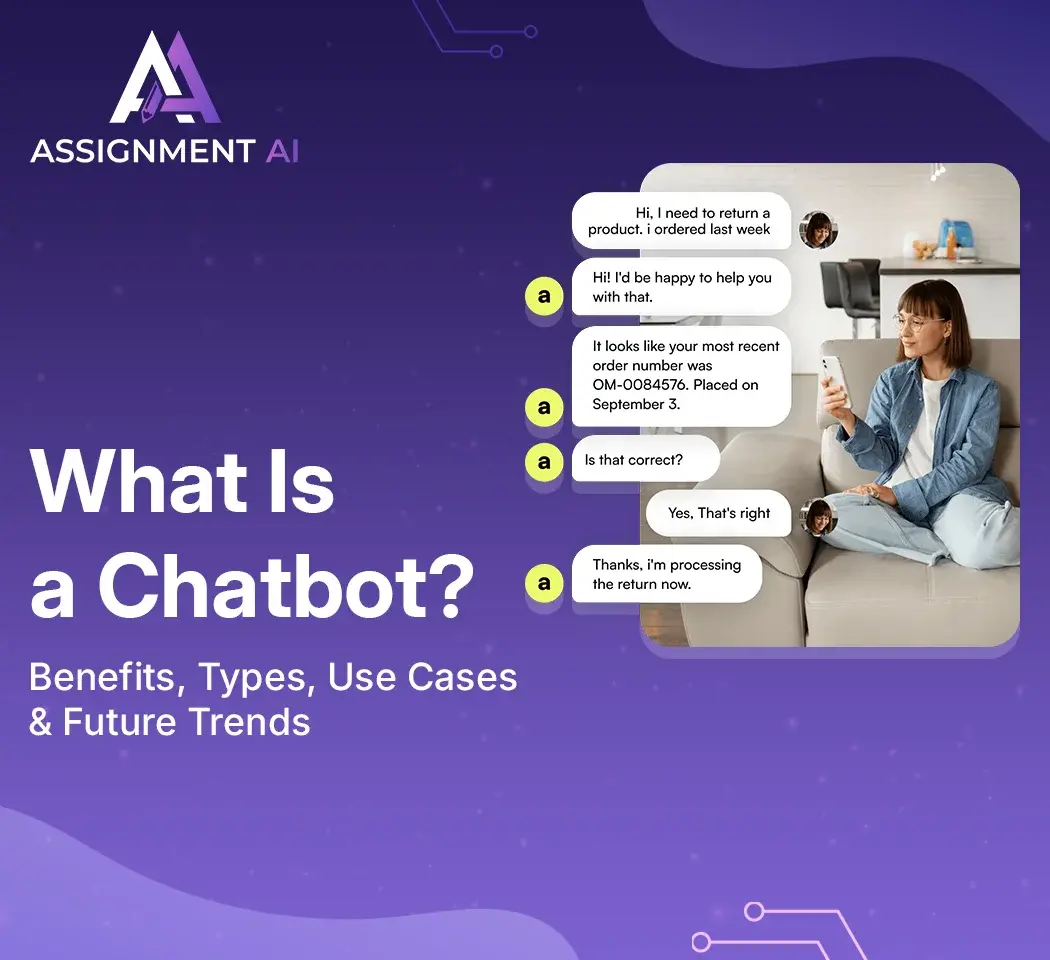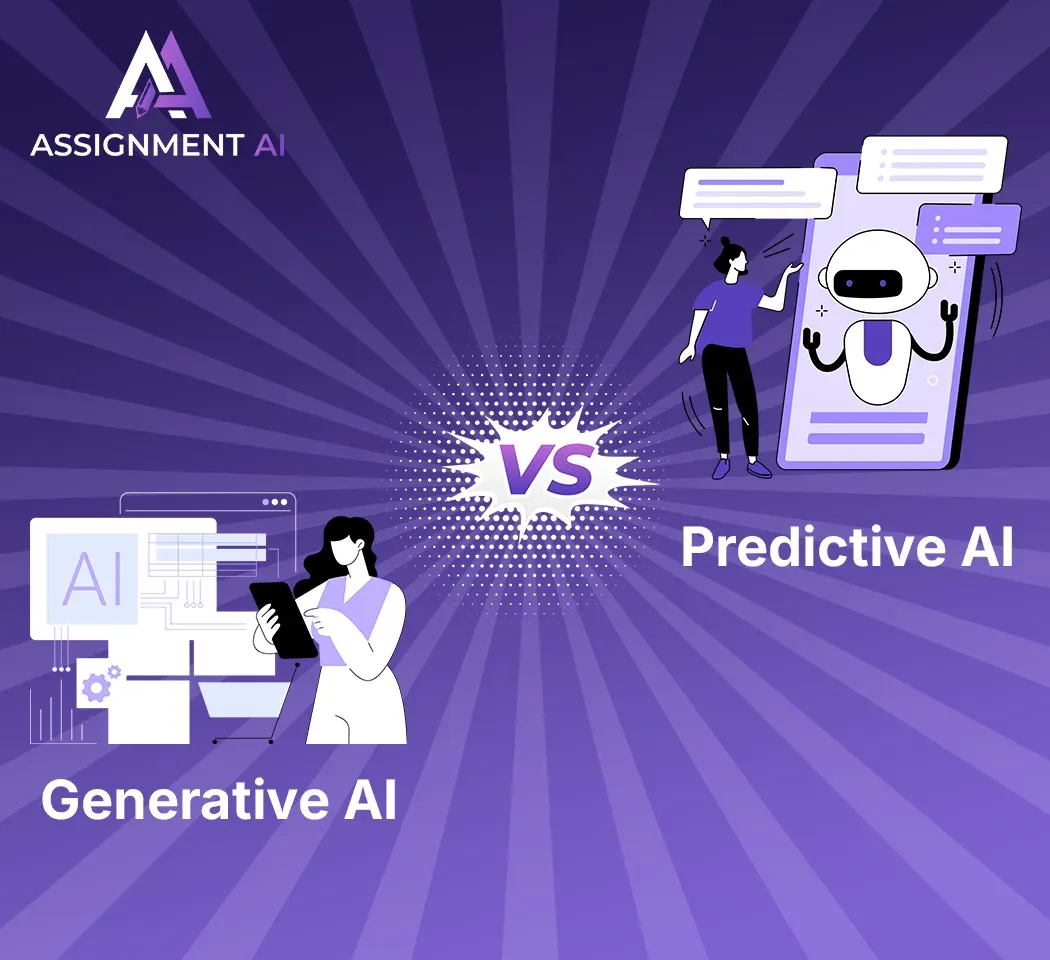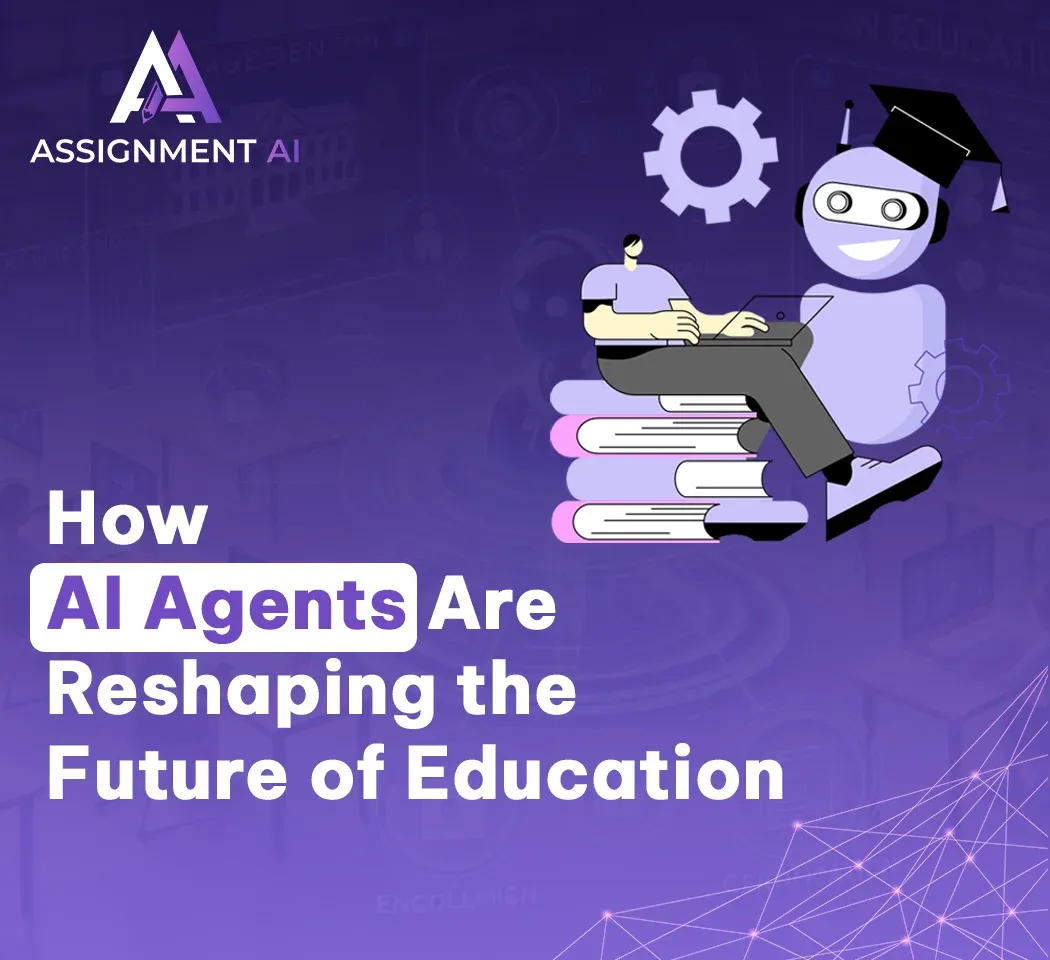AssignmentGPT Blogs
Artificial intelligence (AI) is reshaping many fields, including education. Integrating AI into educational tools transforms traditional teaching methods, creating personalized and responsive learning environments tailored to each student's needs. Understanding how AI transforms education helps educators and institutions prepare for this technological shift and implement it effectively in their classrooms.
These enhancements not only improve learning but also automate administrative tasks, allowing teachers to focus more on teaching and mentoring.
Quick Summary
Artificial intelligence for education is revolutionizing how we learn by customizing educational experiences, streamlining administrative tasks, and enhancing communication through technology tools. The benefits of AI in education extend far beyond automation, fundamentally changing how students engage with learning materials and how teachers deliver instruction.
It’s a game-changer. AI tools, like digital teacher aids and chat services, offer pupils fast, individualized help, making study more fun and beneficial. Seeing AI in action, like with Google Classroom, Duolingo, and Coursera, showcases how AI improves learning, upgrades educational experiences, and amplifies student involvement in schooling. Incorporating AI into tuition methods can result in an effective, inclusive, and captivating educational setting for all learners' unique needs.
What Exactly is AI?
Artificial intelligence is like copying the way people think but by machines, mainly computers. AI uses things like expert systems, understanding human language, recognizing speech, and seeing like a human does.
With the growing excitement about AI, sellers are swiftly highlighting its use in their offerings. Regularly, they equate "AI" with a firmly rooted technology like machine learning.
AI requires specialized hardware and software to write and train machine learning algorithms. AI doesn’t use just any programming language, but Python, R, Java, C++, and Julia are all popular languages among AI developers.
Understanding the Importance of AI in Education Technology
AI-powered education is transforming traditional teaching methods, revolutionizing the technological landscape of the field. Educational artificial intelligence (AI) uses advanced algorithms to analyze large datasets, enabling personalized and adaptable learning environments. Students gain from tailored education, instant insight, and the chance to work with cutting-edge technology like augmented and virtual reality in schooling.
AI chatbots and virtual tutors make studying easy and promote self-learning. Educational chatbots are changing the way students absorb information.
Chatbots, with their built-in natural language processing and machine learning capabilities, provide students swift, personalized assistance. They answer queries and guide learners on their educational journey. Crafting engaging, lively learning encounters assists students in grasping ideas and retaining information more efficiently.
AI advancements are propelling substantial progress in education tech. They boost student involvement with tailored coursework and dynamic talks and improve study spaces for sharpening skills. This is why, by 2027, we might see the AI education sector soar past $20 billion. The global e-learning sector, on its part, is foreseen to rack up sales crossing $166.60 billion by 2023.
Real-World AI in Education Use Cases
Real-world AI in education enhances personalized learning, automates administrative tasks, and provides intelligent tutoring systems. It supports adaptive learning platforms, predictive analytics for student performance, and virtual teaching assistants, revolutionizing how education is delivered and accessed.
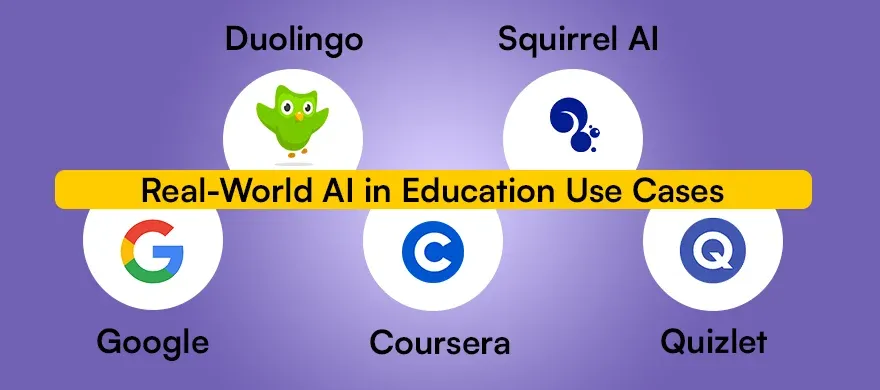
1. Google
Google Classroom uses AI to make teaching easier and more streamlined. Teachers can create and assign tasks, provide feedback, and manage classroom interactions easily. For educators looking to maximize these capabilities, our guide on best ways teachers can use AI in the classroom offers practical strategies for integrating AI tools into daily teaching routines.
With Google Classroom's AI, automatic grading can be done. It suggests suitable learning resources for each student. Plus, it analyzes student data to offer helpful information about their progress and development.
2. Duolingo
The popular Duolingo has revolutionized language learning. As a digital platform for language education, Duolingo leverages AI to tailor lessons to each user's needs.
Students seeking additional AI-powered learning tools can explore our comprehensive list of best AI tools for students to find resources that complement their study habits.
It delivers instruction in many tongues for learners from novice to expert. The AI working beneath Duolingo's surface keeps track of each learner's progress, assesses their exercise responses, and adapts the challenge level as required.
3. Coursera
Anyone without tech expertise can easily understand AI concepts, uses, and effects through Coursera online course, AI for Everyone. It deals with subjects like machine learning, deep learning, and the ethical aspects. College students pursuing higher education can discover more specialized platforms in our best AI tools for college students guide.
The course also explores how AI influences us and various sectors. It's primarily meant for non-tech individuals curious about the area.
4. Squirrel AI
Squirrel AI offers a unique, adaptive learning experience for students. It uses complex algorithms to adjust things like speed, content, and difficulty based on individual students' abilities and learning styles. These smart algorithms take into consideration how well a student remembers information, where they're growing, and places they could get better. This data is then used to design personalized study paths and recommendations to enhance the learning experience. The aim? Making education more effective for each student.
5. Quizlet
Quizlet, an American multinational company that provides courses and learning tools, uses AI to enhance the learning experience with its adaptive learning platform.
Students struggling with time management can also benefit from our practical advice on how to finish your homework faster using both AI tools and proven study techniques.
AI-powered "learning" mode shows which concepts students are familiar with and which they need to use their focus and a personalized curriculum.
These instructional activities ensure efficient and effective learning time through complex transitions and a variety of questions based on practical applications. Additionally, Quizlet uses AI to create practice tests and interactive flashcards, making learning more engaging and personalized to individual learning needs.
Traditional Classroom vs. AI-Powered Classrooms
Use cases of artificial intelligence in education. Artificial intelligence for education facilitates many methods and makes learning more accessible. Let's look at the top 12 AI use cases in education that illustrate how technology is changing learning.
| Feature | Traditional Classroom | AI-Powered Classroom |
|---|---|---|
| Personalization | One-size-fits-all approach, limited ability to tailor to individual needs | Highly personalized learning experiences based on student's strengths, weaknesses, and preferences |
| Pace of Learning | Fixed pace set by teacher, challenging for some students to keep up | Adaptive pace that adjusts to each student's learning speed, allowing them to progress at their own rate |
| Feedback and Assessment | Limited real-time feedback, assessments often at the end of units | Continuous feedback and assessment, identifying areas for improvement in real-time |
| Access to Knowledge | Restricted to information provided by teacher and textbooks | Unlimited access to a vast array of online resources, experts, and information |
| Collaboration | Limited to in-class interactions, restricted by physical location | Enables seamless collaboration among students regardless of location, using online tools and platforms |
| Engagement | Relies on teacher's ability to engage students, can be challenging with large class sizes | Highly engaging, interactive experiences using multimedia, simulations, and gamification |
| Scalability | Limited by physical classroom space and teacher availability | Scalable to accommodate any number of students, not constrained by physical space |
| Efficiency | Significant time spent on administrative tasks and grading | AI handles administrative tasks, allowing teachers to focus on teaching and mentoring |
Use cases of artificial intelligence in education
AI in education enhances personalized learning, automates administrative tasks, and provides intelligent tutoring systems. It enables adaptive learning platforms, assists in grading, improves accessibility, and facilitates student data analysis for tailored instruction.
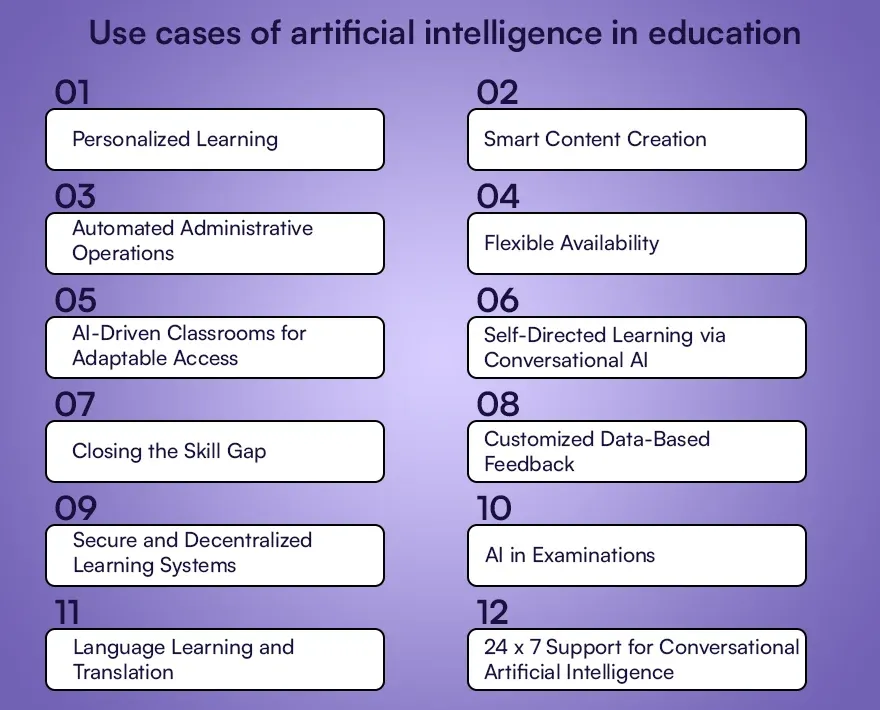
1. Personalized Learning
Students learn differently. Some grasp ideas as quickly, while others need more time. Traditional learning methods didn't consider personalization. But, online education can benefit from artificial intelligence (AI). AI promises custom learning tools for every student. Plus, AI supports teachers with tech, like machine learning. This checks how a student absorbs lessons and then tweaks the system to lessen their stress.
2. Smart Content Creation
AI and ML are important in education, helping teachers and researchers develop products designed for simple teaching and learning. For educators focused on curriculum development, our specialized guide on AI for lesson planning provides step-by-step strategies for creating engaging, comprehensive lesson plans efficiently. Here are some examples of AI-powered intelligent content generation:
1. Information Visualization
Traditional learning asks for more than just physical experiments. With AI's help, online education can turn into a vivid, realistic journey. It gives us a doorway to explore depths with visuals in 2D and 3D. Students get to see things in different lights, which helps them understand better.
2. Digital Lesson Generation
AI makes learning easier. It helps create small, easy-to-store study materials and online classes. This means everyone can access all lessons without needing lots of system storage. Plus, you can use these resources on any device, making remote learning a breeze.
3. Frequent Content Updates
AI enables people to keep their learning materials fresh and applicable. Plus, when anything new is added, they find out right away, helping them ready up for what's next.
3. Automated Administrative Operations
With AI in school education and classrooms, technology takes over most valuable jobs. With an aligned curriculum, AI for education can manage homework, grade tests, organize research papers, manage reports, create presentations and notes, and manage other administrative tasks.
That’s why businesses rely on integrating AI solutions for education to achieve their daily goals. By automating everyday activities, AI makes learning environments more informed and productive.
4. Flexible Availability
Users can now leverage the benefits of AI in education because they are fully informed. A recent survey found that over 60% of businesses in education rely on AI/ML-powered education applications supported by modern tools and resources. Features such as multilingual support facilitate translation into many languages, improving the teaching and learning of speakers.
AI is also needed to educate people who are deaf or blind. Presentation Translator is an AI-powered translation tool that generates a simulated speech with real-time translation.
5. AI-Driven Classrooms for Adaptable Access
AI opens up possibilities for a dynamic, responsive classroom. Picture this: AI tunes the speed, challenge, or instruction method for each student. It reacts to their involvement and scores on the spot.
Ready to supercharge your learning with AI? The future of education is here, and AssignmentGPT is leading the way! Don’t wait unlock smarter, faster, and more efficient study tools today and stay ahead in your academic journey,
6. Self-Directed Learning via Conversational AI
Chatting AI helpers can encourage students in back-and-forths, helping them navigate independent study courses. This lets pupils learn in their rhythm and provides immediate responses to arising queries.
7. Closing the Skill Gap
We face a significant challenge—not only do we have many preschoolers who need to be reintegrated into the system, but those currently attending school are not learning the skills necessary to successfully transition into the labor market.
AI- and ML-powered software applications can largely address this skill gap and provide students with more opportunities for skill development.
This is not just for students; The skills and training of existing employees can boost morale and motivate company-wide commitment to innovation and digital transformation.
8. Customized Data-Based Feedback
Feedback is essential in designing a practical learning experience in the classroom or at work. Effective teaching goes beyond delivering content—it requires ongoing feedback. Reliable feedback is essential here, so Artificial intelligence for education analyzes everyday data and generates insights.
Data-driven feedback increases student satisfaction, removes sources of bias from learning, and identifies areas for skill improvement. This feedback is tailored to the performance of each individual, whether they are students or employees, as listed in the policy.
9. Secure and Decentralized Learning Systems
Quick changes are happening in the education field thanks to AI. However, things like protecting data, changing access to data, and old-style certification procedures can slow it down. Yet, AI-powered decentralized options can usher in good tech changes in education.
10. AI in Examinations
AI software systems can be actively used in investigations and interviews to help identify suspicious behavior and alert the supervisor. AI systems track each person through webcams, microphones, web browsers, perform keystroke analysis, and alert the system to any movement.
11. Language Learning and Translation
AI has greatly enhanced language learning by providing instant real-time feedback on grammar, pronunciation, fluency and vocabulary. AI-powered platforms like Duolingo tailor lessons to individual learning styles and skill levels. By constantly analyzing the user interface, AI adjusts the intensity and content of learning, providing personalized support for each learner.
12. 24 x 7 Support for Conversational Artificial Intelligence
Chatbots are a growing example of AI in education that can collect data and provide relevant information and support. This benefits teachers and corporate leaders whenever it comes to engaging students in formal learning.
Conversational artificial intelligence provides intelligent teaching in education by carefully controlling and customizing content management systems to meet learners’ needs Worldwide, people opt for corporate training programs and remotely study because they don’t have to take time away from work, family, or study. Here, AI chatbots can answer registration questions, provide timely assistance, provide users with important learning materials, and provide support at all times
How Will AI Affect Education in the Future?
Artificial intelligence in education is here to stay. It is best to adopt it immediately as the impact on classrooms and educational institutions will increase.
While the exact nature of artificial intelligence's growth in education is uncertain, some inferences can be drawn from its current uses: As AI technology improves, it will be made more efficient and accurate in use in the present.
Using AI apps to improve data analysis and even create customized student experiences, for example, will become more complex and detailed.
In addition to AI programs, virtual reality software and games are likely to become more common in schools. Students can get first-hand experience with virtual reality AI that facilitates and enhances learning. This technology allows for the exposure of scientific experiments, creating a safer and more stimulating environment for students.
Artificial intelligence will be used to create smart classrooms and smart buildings in schools. We now have technology that allows AI-powered apps to remotely control devices, including lighting, alarms and heating.
The use of this technology can make educational institutions more professional and student friendly as well as safer environments.
How to Integrate AI in Education for Advanced Learning and Administration?
To integrate AI in education, adopt adaptive learning platforms, use AI-driven tools for personalized learning, and employ automated grading systems. Implement AI for data-driven insights, smart content creation, and streamline administrative tasks like scheduling.
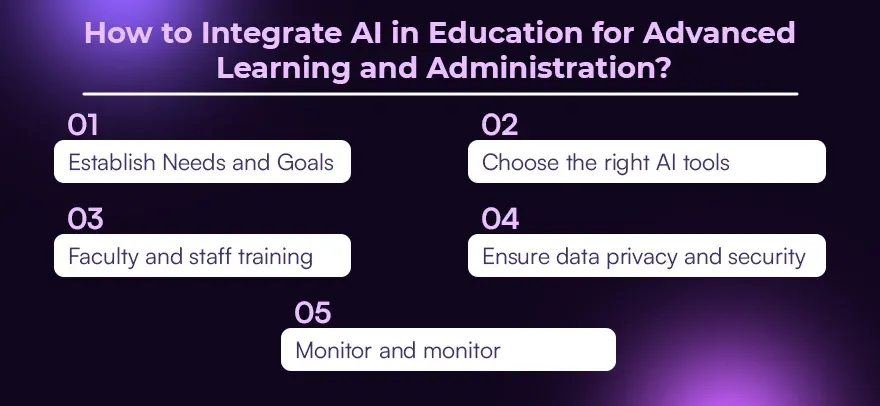
1. Establish Needs and Goals:
Identify your organization’s specific needs and goals that you want to achieve with AI integration. This will help you choose the right AI tools and applications.
2. Choose the right AI tools:
Choose AI tools that align with your goals and are user-friendly for students and teachers. Consider factors such as ease of integration, flexibility, and cost.
3. Faculty and staff training:
Provide training for faculty and administrative staff to ensure they understand how to properly use AI tools. This includes not only technical training but also guidance on how to integrate AI into learning and business practices.
4. Ensure data privacy and security:
Implement strong data privacy and security measures to protect sensitive information from students and staff. Ensure compliance with appropriate legal and ethical standards.
5. Monitor and monitor:
Continuously monitor the effectiveness of AI tools and applications. Collect student and instructor feedback, and use this feedback to make necessary changes and improvements.
Conclusion
Artificial intelligence is revolutionizing the education world. It’s providing personalized learning experiences, simplifying administrative tasks, and enhancing hands-on experiences with smart technology. This innovation creates a world where customized learning journeys, intelligent content creation, smart classrooms, and constant support through conversational AI are a reality. By integrating AI into teaching methods, we can create more effective, inclusive, and engaging learning environments that cater to the diverse needs of every student.
FAQs
1. What is artificial intelligence (AI) in education?
2. How does AI enable learning?
3. Can AI replace teachers?
4. What are some examples of AI applications in education?
5. How does AI improve business services in education?
Content writer at @AssignmentGPT
Rashi Vashisth is a content writer who helps brands put their thoughts into words. She creates blogs, website content, and brand stories that are easy to understand and feel genuine. Her writing style focuses on keeping things clear and making sure the message connects with the right people.
Master AI with
AssignmentGPT!
Get exclusive access to insider AI stories, tips and tricks. Sign up to the newsletter and be in the know!
Transform Your Studies with the Power of AssignmentGPT
Empower your academic pursuits with tools to enhance your learning speed and optimize your productivity, enabling you to excel in your studies with greater ease.
Start Your Free Trial ➤Start your success story with Assignment GPT! 🌟 Let's soar! 🚀
Step into the future of writing with our AI-powered platform. Start your free trial today and revolutionize your productivity, saving over 20 hours weekly.
Try For FREE ➤